- Cuttings: The Key to Vigorous Onions
- Feeding: Providing Essential Nutrients
- Essential Guidelines for Cutting Onion Seedlings
- 1. Timing:
- 2. Tools:
- 3. Leaf Cutting Technique:
- 4. Stem Cutting Technique:
- 5. Care after Cutting:
- 6. Remember:
- Effective Techniques for Pruning Onion Seedlings
- 1. Timing is Key
- 2. Selective Removal of Weaker Seedlings
- 3. Maintain Optimal Spacing
- 4. Promote Air Circulation
- 5. Encourage Bulb Development
- 6. Regular Maintenance
- Expert Advice on Feeding Onion Seedlings
- 1. Choose the Right Fertilizer
- 2. Start Feeding at the Right Time
- 3. Apply the Fertilizer Properly
- 4. Use Organic Fertilizers
- 5. Monitor Soil Moisture
- Key Nutrients for Healthy Onion Seedlings
- Optimal Feeding Schedule for Onion Seedlings
- Advanced Feeding Methods to Promote Onion Seedling Growth
- 1. Foliar Feeding
- 2. Slow-Release Fertilizers
- 3. Organic Amendments
- Troubleshooting Common Feeding Issues in Onion Seedlings
- 1. Overfeeding
- 2. Underfeeding
- 3. Improper Nutrient Balance
- 4. pH Imbalance
- 5. Inconsistent Feeding
- 6. Environmental Stress
- Final Tips for Mastering the Cuttings and Feeding of Onion Seedlings
- 1. Transplanting Seedlings
- 2. Feeding Onion Seedlings
- 3. Protecting Onion Seedlings
- 4. Harvesting Onion Bulbs
- “Question-Answer”
- How important are cuttings for onion seedlings?
- What are some tips for cutting onion seedlings?
- How do I know when it is the right time to cut onion seedlings?
- What should I feed onion seedlings for optimal growth?
- How often should I feed onion seedlings?
- What are some signs that onion seedlings need feeding?
- Can I use organic fertilizers for feeding onion seedlings?
- “Video” What to do when ONIONS BOLT: Growing in the Garden
Onion seedlings are a crucial stage in the cultivation of onions. Proper cuttings and feeding techniques can make or break the success of your onion crop. In this article, we will delve into the two vital stages of onion seedling care: cuttings and feeding. Mastering these stages will ensure healthy and productive onion plants.
Cuttings: The Key to Vigorous Onions
The first crucial stage in onion seedling care is cuttings. When the seedlings have reached a height of around 2-3 inches, it’s time to give them a trim. This process, known as cuttings, involves gently snipping off the top part of the seedling.
Why is this important?
By removing the top part, you are encouraging lateral growth and creating a bushier, more robust plant. This helps in producing stronger onion bulbs and ultimately, a higher yield. Care should be taken to use clean and sharp scissors or pruners to avoid damaging the seedlings.
Feeding: Providing Essential Nutrients
The second vital stage in onion seedling care is feeding. Once the cuttings are done, it’s time to provide the seedlings with the necessary nutrients for healthy growth. Onions are heavy feeders, and they require a balanced fertilizer rich in nitrogen, phosphorus, and potassium.
Pro-Tip: Use a slow-release fertilizer to ensure a steady supply of nutrients over time. This will promote steady growth and help prevent nutrient deficiencies.
Feeding should be done regularly throughout the onion seedling’s growth period. As they grow, the seedlings will need more nutrients to support their development. Be sure to follow the recommended feeding schedule and adjust according to the specific needs of your onion variety.
Remember: Proper cuttings and feeding are essential for the successful cultivation of onion seedlings. By mastering these two vital stages, you can ensure healthier, more vigorous plants that will produce an abundant onion harvest.
Essential Guidelines for Cutting Onion Seedlings
When it comes to cutting onion seedlings, there are a few essential guidelines that every gardener should follow to ensure healthy growth and maximum yield. Proper cutting techniques not only encourage the growth of new shoots but also help create a bushier and more robust plant. Here are some guidelines to keep in mind:
1. Timing:
It is crucial to wait until the onion seedlings are at the right stage for cutting. The ideal time to start cutting is when the seedlings have developed their first two or three sets of true leaves. This usually occurs when the seedlings are around 4 to 6 inches tall.
2. Tools:
Make sure to have a sharp pair of scissors, pruning shears or a clean utility knife for cutting onion seedlings. Dull or dirty cutting tools can damage the plants and increase the risk of disease transmission.
3. Leaf Cutting Technique:
To cut onion seedlings properly, hold the seedling firmly near the base with one hand while using the other hand to make a clean cut about half an inch above the soil level. It is important to avoid cutting too close to the soil to prevent damaging the growing point of the plant.
4. Stem Cutting Technique:
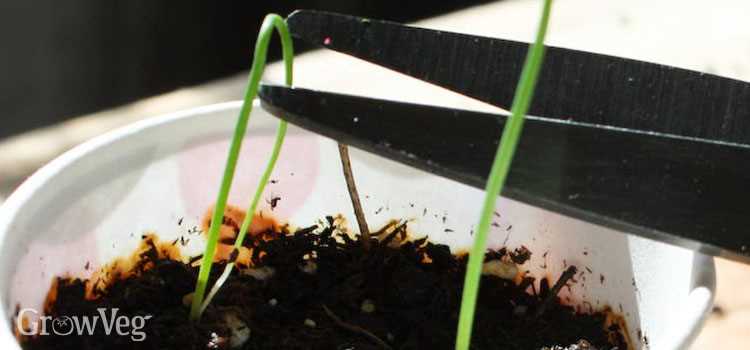
If you want to promote bushier growth, you can use the stem cutting technique. Instead of cutting the leaves, make a diagonal cut about an inch above the soil level on the main stem of the seedling. This will encourage the plant to develop multiple new shoots.
5. Care after Cutting:
After cutting the onion seedlings, it is important to provide them with proper care. Keep the soil moist but not saturated and provide adequate sunlight or artificial light for at least 12-14 hours per day. Regularly fertilize the plants according to the recommended feeding guidelines.
6. Remember:
Always label the cuttings with the onion variety and date of cutting to keep track of different seedlings and plan for future planting. Remember to dispose of any cuttings properly to prevent the spread of disease.
By following these essential guidelines for cutting onion seedlings, you can ensure healthy growth, encourage bushier plants, and ultimately enjoy a successful harvest.
Effective Techniques for Pruning Onion Seedlings
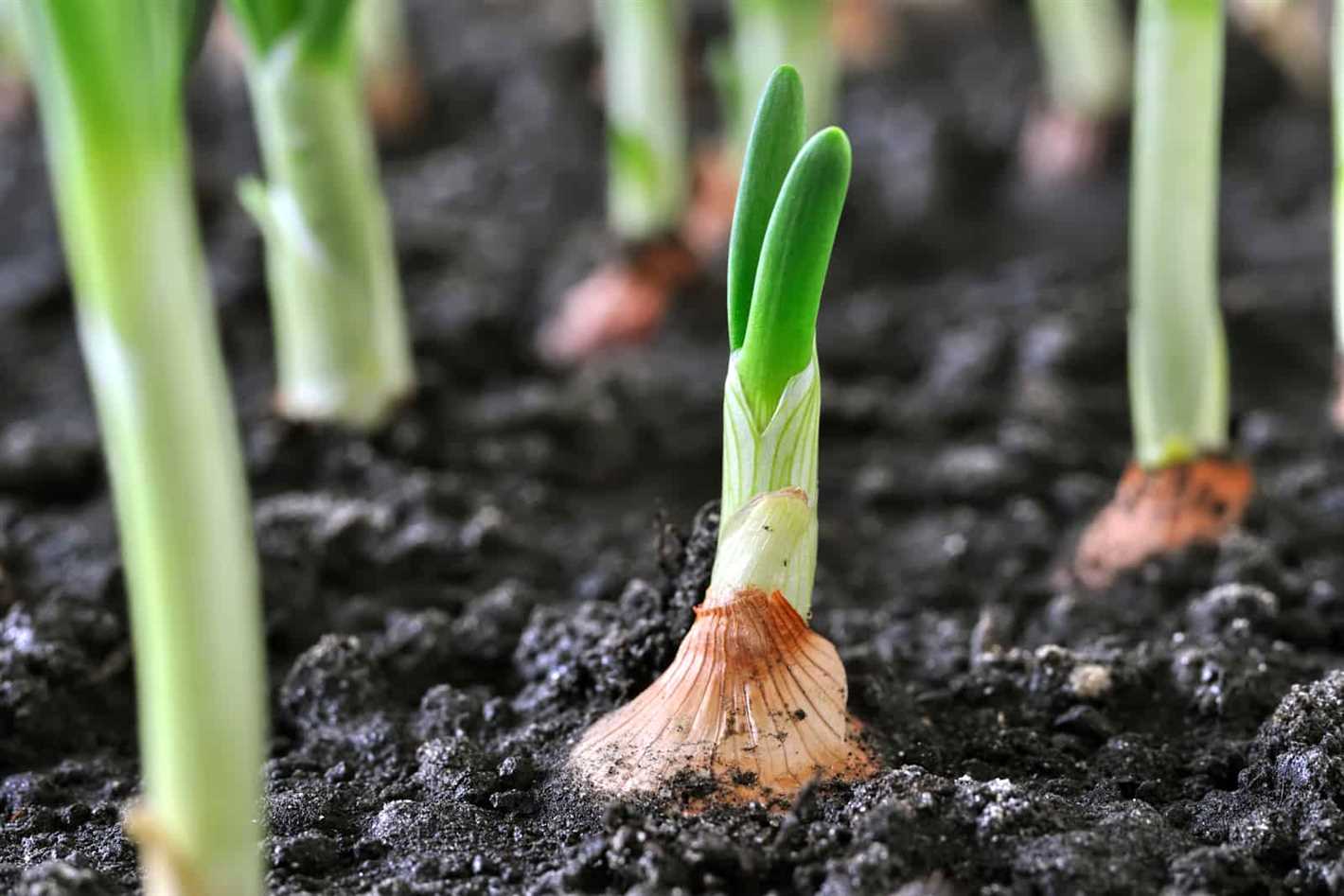
1. Timing is Key
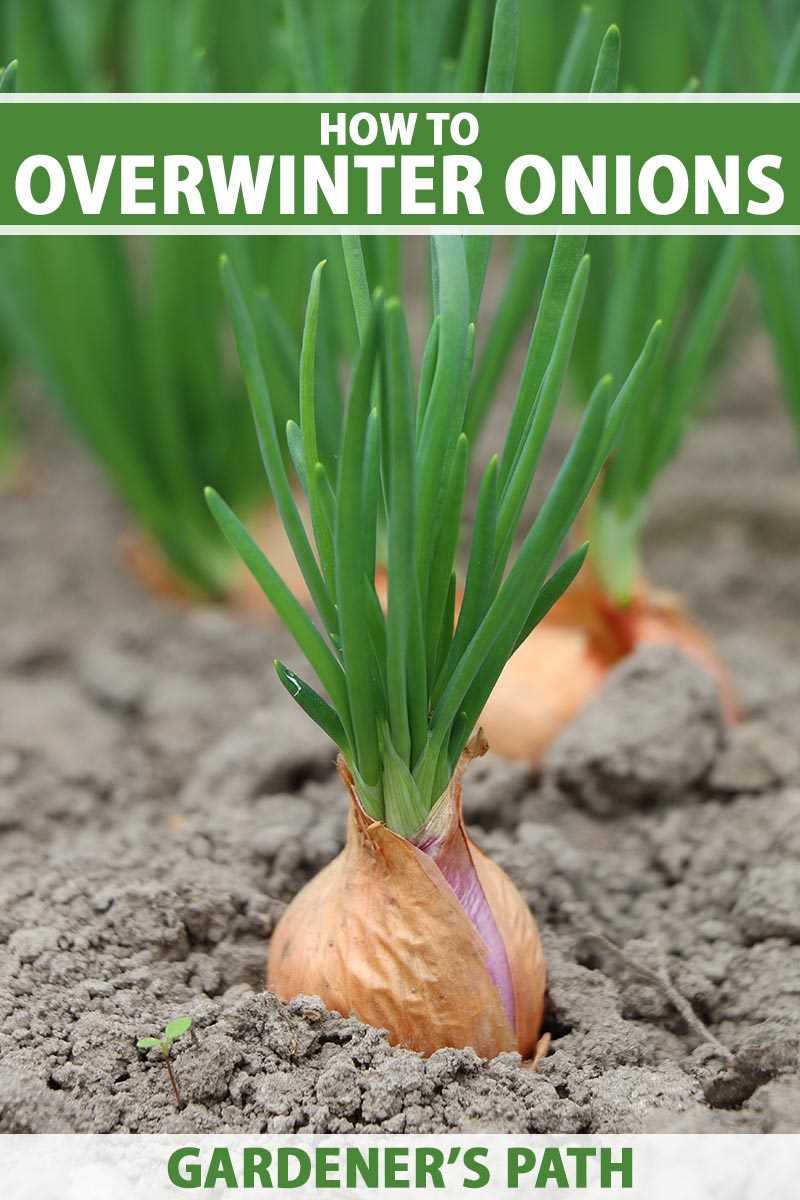
Pruning of onion seedlings should ideally be done when they have reached a height of 4-6 inches. This is typically around 6-8 weeks after sowing the seeds. Pruning too early may result in stunted growth, while pruning too late can lead to reduced bulb development.
2. Selective Removal of Weaker Seedlings
When pruning onion seedlings, it is important to selectively remove the weaker seedlings to ensure that the stronger ones have enough space to grow. This can be done by gently pulling out the weaker seedlings, taking care not to disturb the root system of the remaining plants.
3. Maintain Optimal Spacing
Proper spacing is essential for the healthy growth of onion seedlings. Pruning can help in achieving the desired spacing between the plants. It is recommended to leave a spacing of at least 4-6 inches between each plant. Remove any excess seedlings to maintain this spacing.
4. Promote Air Circulation
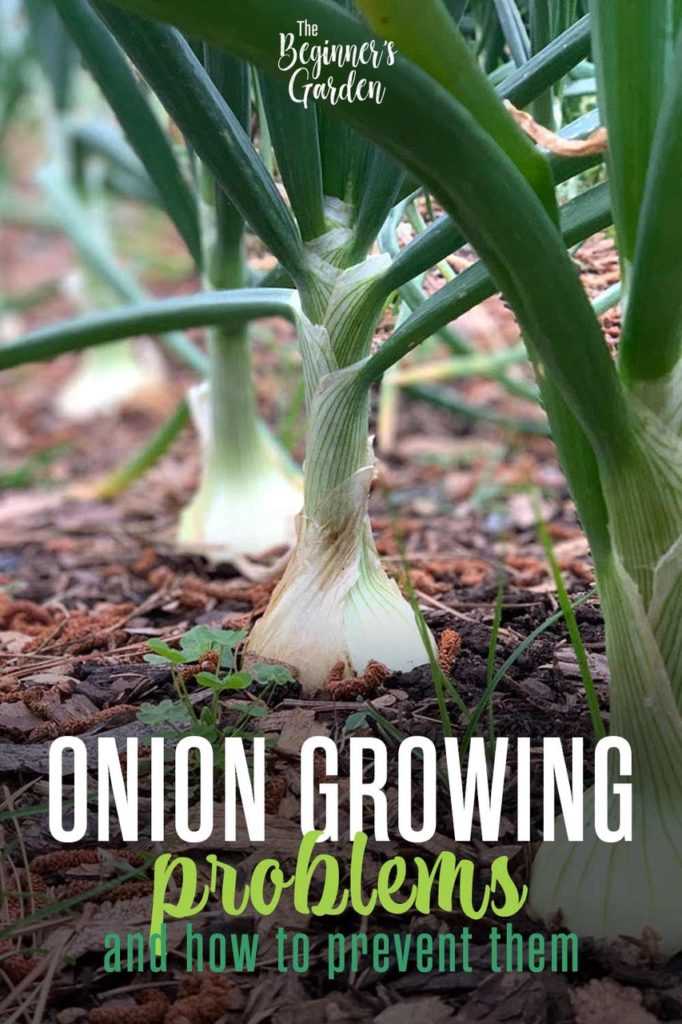
Pruning aids in promoting air circulation around the onion seedlings. This helps in reducing the risk of fungal diseases such as damping off. Trim the foliage of the seedlings to ensure that they do not become too dense, allowing air to circulate freely.
5. Encourage Bulb Development
Pruning can also help in encouraging bulb development in onion seedlings. By removing the outer leaves of the plants, energy is directed towards the development of the bulb. This results in larger and healthier onions at the time of harvest.
6. Regular Maintenance
Regular pruning and maintenance of onion seedlings is essential for their overall health and growth. Check the plants regularly for any signs of pests or diseases and take appropriate action if needed. Remove any dead or yellowing leaves to prevent the spread of diseases.
Incorporating these effective pruning techniques into your onion seedling care routine can greatly improve the quality and yield of your crop. Remember to always handle the seedlings with care to avoid causing any damage to their delicate roots.
Expert Advice on Feeding Onion Seedlings
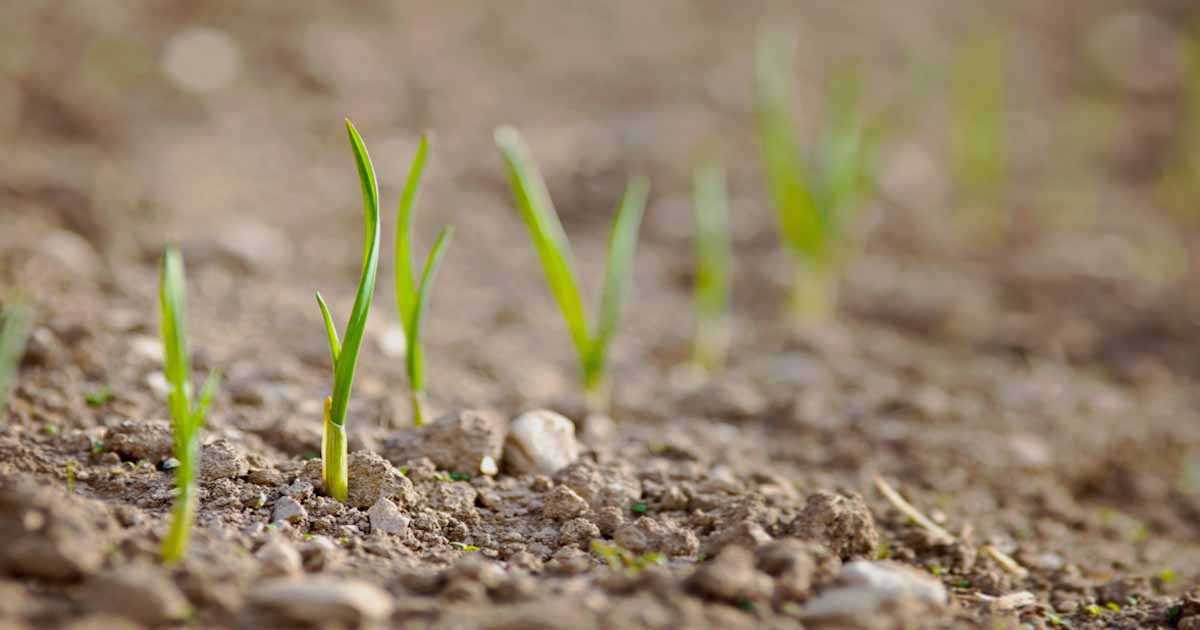
Feeding onion seedlings is a crucial step in their development, as it provides them with the necessary nutrients for healthy growth. Here are some expert tips on how to properly feed your onion seedlings:
1. Choose the Right Fertilizer
When selecting a fertilizer for your onion seedlings, it’s important to choose one that is high in nitrogen. Nitrogen is essential for promoting leafy growth and ensuring the overall health of your seedlings. Look for a fertilizer with a higher percentage of nitrogen compared to phosphorus and potassium.
2. Start Feeding at the Right Time
It’s recommended to start feeding your onion seedlings with fertilizer once they have developed their first true leaves. This usually occurs around 2-3 weeks after planting. Feeding them too early can lead to nutrient burn, while feeding them too late may result in stunted growth.
3. Apply the Fertilizer Properly
When applying fertilizer to your onion seedlings, it’s important to do so evenly and at the right rate. Over-fertilization can damage the plants, while under-fertilization can prevent proper growth. Follow the instructions on the fertilizer package for the correct application rate and method.
4. Use Organic Fertilizers
Using organic fertilizers for feeding your onion seedlings is highly recommended. Organic fertilizers, such as compost or well-rotted manure, provide a slow and steady release of nutrients, ensuring a steady growth rate for your seedlings. They also help improve soil fertility in the long term.
5. Monitor Soil Moisture
Proper soil moisture is crucial for the uptake of nutrients by onion seedlings. Keep the soil consistently moist, but avoid overwatering, as this can lead to root rot and other diseases. Use your finger to gauge the moisture level by sticking it about an inch into the soil. If it feels dry, it’s time to water.
By following these expert tips on feeding your onion seedlings, you can ensure that they have the best chance of developing into healthy and productive plants.
Key Nutrients for Healthy Onion Seedlings
Proper nutrition is crucial for the healthy growth and development of onion seedlings. By providing the essential nutrients, you can ensure strong seedlings that are better able to resist diseases and produce high-quality onions. Here are some key nutrients that you should consider when feeding your onion seedlings:
- Nitrogen: Nitrogen is essential for the growth and development of onion seedlings. It helps in the formation of proteins, chlorophyll, and enzymes, which are all important for plant growth. A nitrogen deficiency can lead to stunted growth and pale yellow leaves. You can provide nitrogen to your onion seedlings by using fertilizers that have a high nitrogen content, such as ammonium nitrate or urea.
- Phosphorus: Phosphorus is important for the root development of onion seedlings. It promotes strong and healthy root growth, which is crucial for nutrient uptake. A phosphorus deficiency can result in poor root development and weak seedlings. You can add phosphorus to your onion seedlings by using a fertilizer that contains phosphorus, such as superphosphate or bone meal.
- Potassium: Potassium helps in the overall growth and development of onion seedlings. It improves the plant’s resistance to diseases and helps in the formation of sugars and starches. A potassium deficiency can lead to weak seedlings and reduced yield. You can provide potassium to your onion seedlings by using a fertilizer that contains potassium, such as potassium chloride or potassium sulfate.
- Calcium: Calcium is important for the cell walls of onion seedlings. It helps in the development of strong and healthy leaves and stems. A calcium deficiency can result in weak stems and leaves, making the seedlings more susceptible to diseases and pests. You can add calcium to your onion seedlings by using a calcium-rich fertilizer or by applying lime to the soil.
In addition to these key nutrients, onion seedlings also require other micronutrients, such as iron, manganese, and zinc, in smaller quantities. These micronutrients play a vital role in various metabolic processes and help in overall plant growth and development. You can provide these micronutrients to your onion seedlings by using a balanced fertilizer that contains a wide range of micronutrients.
It is important to note that while proper nutrition is crucial for the healthy growth of onion seedlings, over-fertilization can be detrimental. Always follow the recommended dosage and application instructions provided by the fertilizer manufacturer.
Optimal Feeding Schedule for Onion Seedlings
Proper feeding is crucial for the healthy growth and development of onion seedlings. Here is an optimal feeding schedule to ensure your onion seedlings receive the nutrients they need:
- First Feeding: Begin feeding your onion seedlings when they are about two weeks old. This initial feeding will help provide the necessary nutrients for their early growth. Use a balanced liquid fertilizer diluted according to the package instructions.
- Second Feeding: About two weeks after the first feeding, it is time for the second feeding. At this stage, your seedlings are starting to develop stronger roots and leaves. Use a fertilizer specifically formulated for seedlings and dilute it according to the instructions.
- Third Feeding: Another two weeks later, administer the third feeding. By this time, your onion seedlings should have well-established roots and be growing rapidly. Use a slow-release granular fertilizer to provide a steady supply of nutrients over a longer period.
- Final Feeding: The last feeding for onion seedlings should be given about two weeks before transplanting them into the garden. This final feeding will promote vigorous growth and help ensure transplant success. Use a fertilizer high in phosphorus, which promotes root development.
Remember to always follow the instructions on the fertilizer packaging regarding proper dilution ratios and application methods. Overfeeding can be harmful to seedlings, so it is important to provide the right amount of nutrients at the recommended times.
Following this optimal feeding schedule will give your onion seedlings the best chance at healthy growth, ensuring they are ready to thrive when transplanted into your garden.
Advanced Feeding Methods to Promote Onion Seedling Growth
Feeding is a crucial aspect of promoting the growth of onion seedlings. By providing the necessary nutrients, you can ensure healthy and robust plants. Here are some advanced feeding methods that you can employ:
1. Foliar Feeding
Foliar feeding involves applying nutrient solutions directly onto the leaves of the onion seedlings. This method allows for the rapid absorption of nutrients and can provide quick results. To foliar feed your onion seedlings:
- Mix a nutrient solution with the appropriate balance of macronutrients (nitrogen, phosphorus, and potassium) and micronutrients (iron, manganese, zinc, etc.)
- Transfer the nutrient solution to a spray bottle or sprayer
- Gently spray the solution onto the leaves of the onion seedlings, ensuring full coverage
- Repeat this process every 1-2 weeks throughout the seedling growth stage
2. Slow-Release Fertilizers
Slow-release fertilizers are a convenient and effective way to feed onion seedlings. These fertilizers are formulated to release nutrients gradually over an extended period. To use slow-release fertilizers for your onion seedlings:
- Select a slow-release fertilizer with a balanced nutrient profile suitable for onion seedlings
- Follow the instructions on the fertilizer packaging for application rates
- Apply the slow-release fertilizer to the soil around the onion seedlings
- Water the seedlings thoroughly to activate the release of nutrients
- Reapply the slow-release fertilizer as directed by the packaging instructions
3. Organic Amendments
Organic amendments can enhance the nutrient content of the soil and promote the growth of onion seedlings. Some commonly used organic amendments include compost, aged manure, and worm castings. Here’s how to use organic amendments:
- Prepare the organic amendment by thoroughly composting or aging it to ensure it is free from pathogens and weed seeds
- Apply the organic amendment to the soil around the onion seedlings, ensuring even distribution
- Incorporate the organic amendment into the soil using a garden fork or shovel
- Water the seedlings after applying the organic amendment to help it settle into the soil
- Repeat the application of organic amendments as needed throughout the growing season
By employing these advanced feeding methods, you can provide your onion seedlings with the necessary nutrients for optimal growth. Remember to monitor your seedlings closely and adjust the feeding regimen as needed to ensure healthy and vigorous plants.
Troubleshooting Common Feeding Issues in Onion Seedlings
Feeding onion seedlings is crucial for their healthy growth and development. However, sometimes issues can arise that affect the feeding process and hinder the growth of the seedlings. Here are some common feeding issues you may encounter with onion seedlings:
1. Overfeeding
Overfeeding onion seedlings can lead to excessive leaf growth with weak stems. This can make the seedlings prone to falling over or damping off. To avoid overfeeding, follow the recommended feeding schedule and dilution rates for fertilizers. Always remember that less is often more when it comes to feeding seedlings.
2. Underfeeding
Underfeeding onion seedlings can result in stunted growth and yellowing of leaves. If you notice pale or yellowing foliage, it may be a sign of nutrient deficiency. Increase the frequency or strength of your feeding regimen to ensure the seedlings receive an adequate supply of nutrients.
3. Improper Nutrient Balance
Providing a proper balance of nutrients is essential for the healthy growth of onion seedlings. Imbalances in nutrients can cause various issues such as leaf discoloration, poor root development, or weak stems. Use a balanced fertilizer specifically formulated for seedlings to ensure all necessary nutrients are present in the right proportions.
4. pH Imbalance
The pH level of the growing medium can greatly affect nutrient availability to onion seedlings. If the pH is too high or too low, it can cause deficiencies or toxicities of certain minerals. Regularly test the pH of the soil or growing medium and adjust it if necessary to maintain a slightly acidic pH around 6.0-6.5 for optimum nutrient uptake.
5. Inconsistent Feeding
Consistency is key when it comes to feeding onion seedlings. Irregular or infrequent feeding can lead to uneven growth and nutrient deficiencies. Establish a regular feeding schedule and stick to it throughout the seedling’s growth period.
6. Environmental Stress
Environmental factors such as temperature, humidity, and light can affect the feeding process of onion seedlings. High temperatures, low humidity, or insufficient light can hinder nutrient absorption and transpiration. Provide optimal environmental conditions by maintaining a suitable temperature range, humidity level, and providing adequate light to ensure proper feeding and growth of the seedlings.
By troubleshooting these common feeding issues, you can ensure the healthy growth and development of your onion seedlings and maximize their potential yield.
Final Tips for Mastering the Cuttings and Feeding of Onion Seedlings
1. Transplanting Seedlings
Once your onion seedlings have reached a height of around 4-6 inches, it’s time to transplant them into your garden or desired growing location.
Steps to transplant onion seedlings:
- Choose a well-draining location with fertile soil.
- Prepare the soil by removing any weeds or rocks and adding organic matter.
- Dig small holes or trenches, spacing them 4-6 inches apart.
- Carefully remove the seedlings from their containers, taking care not to damage the roots.
- Place each seedling in a hole or trench, ensuring the roots are spread out and covered with soil.
- Water the seedlings thoroughly after transplanting.
2. Feeding Onion Seedlings
Proper feeding is crucial for the growth and development of onion seedlings.
Here are some tips for feeding onion seedlings:
- Use a balanced fertilizer high in nitrogen to promote foliage growth.
- Apply the fertilizer according to the package instructions, usually every 4-6 weeks.
- Avoid over-fertilizing, as it can lead to excessive foliage growth and delay bulb formation.
- Water the seedlings regularly, ensuring the soil remains moist but not waterlogged.
3. Protecting Onion Seedlings
Onion seedlings are vulnerable to various pests and diseases. Taking preventive measures is essential to protect your seedlings.
Here are some tips for protecting onion seedlings:
- Use row covers or netting to protect the seedlings from pests like birds and insects.
- Avoid planting onions near brassicas, as they can attract onion maggots.
- Maintain proper spacing between seedlings to improve air circulation and reduce the risk of disease.
- Monitor the seedlings regularly for any signs of pest or disease damage and take appropriate action.
4. Harvesting Onion Bulbs
The final stage in the onion growing process is harvesting the bulbs.
Follow these steps to harvest onion bulbs:
- Wait for the onion tops to yellow and fall over.
- Gently lift the bulbs from the soil using a garden fork or trowel.
- Allow the bulbs to dry in a well-ventilated area for several weeks.
- Once the bulbs are fully dry, remove any remaining foliage and store them in a cool, dry place.
- Use the harvested onions in your favorite recipes or store them for future use.
By following these final tips, you will be able to master the cuttings and feeding of onion seedlings, leading to a successful onion harvest.
“Question-Answer”
How important are cuttings for onion seedlings?
Cuttings are extremely important for onion seedlings as they help in promoting root growth and overall plant development. Proper cutting techniques ensure that the seedlings have a strong root system that will support the growth of healthy onion bulbs.
What are some tips for cutting onion seedlings?
When cutting onion seedlings, it is important to use clean and sharp scissors to avoid any infections. It is recommended to make a diagonal cut just above the soil level to prevent any damage to the main stem. Additionally, it is crucial to dispose of the cuttings properly to prevent the spread of diseases and pests.
How do I know when it is the right time to cut onion seedlings?
The right time to cut onion seedlings is when they have reached a height of around 4-6 inches and have developed a healthy root system. At this stage, the seedlings are strong enough to withstand the cutting process and will benefit from the removal of excess growth.
What should I feed onion seedlings for optimal growth?
For optimal growth, it is important to feed onion seedlings with a balanced fertilizer that is high in phosphorus and potassium. This will help in promoting root development, strong stem growth, and the formation of healthy bulbs. It is also important to ensure that the seedlings are well-watered and receive adequate sunlight.
How often should I feed onion seedlings?
Onion seedlings should be fed with a balanced fertilizer every 2-3 weeks. This will provide them with the necessary nutrients for healthy growth. However, it is important not to overfeed the seedlings as this can lead to nutrient burn and other growth problems.
What are some signs that onion seedlings need feeding?
If onion seedlings show signs of slow growth, pale or yellowing leaves, or stunted development, it is likely that they need feeding. These are indications that the seedlings are not receiving enough nutrients and need a boost to support their growth. Feeding them with a balanced fertilizer will help rectify these issues.
Can I use organic fertilizers for feeding onion seedlings?
Yes, organic fertilizers can be used for feeding onion seedlings. Organic fertilizers, such as compost or well-rotted manure, provide a slow-release of nutrients and improve soil health. They are a natural and environmentally friendly option for feeding seedlings and can help in producing healthy and flavorful onions.







